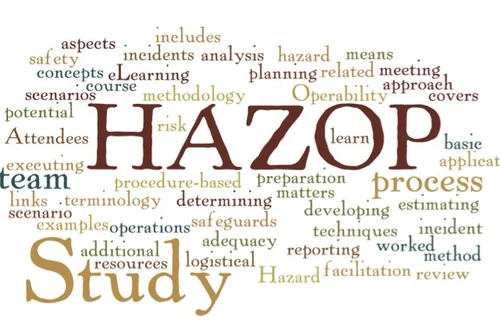HAZOP Study Simplified: A Beginner’s Guide to Safer Processes
HAZOP Study Simplified: A Beginner’s Guide to Safer Processes

Introduction to HAZOP Study and Its Purpose
The Hazard and Operability (HAZOP) Study is one of the most widely used methods for identifying process risks in industrial systems. Originally developed for the chemical industry, HAZOP has become a standard safety analysis method across sectors such as pharmaceuticals, oil & gas, energy, food processing, and manufacturing.
The purpose of a HAZOP Study is to methodically examine how a process might deviate from its intended operation and identify the potential consequences. The goal is to improve operational safety by anticipating possible failures and addressing them before they lead to incidents.
This article serves as a practical guide for beginners, explaining the concept, structure, benefits, and essential steps of a HAZOP Study in simple terms.
Understanding the Core Principles of HAZOP
At its core, a HAZOP Study relies on two main ideas: process deviation and systematic examination. It uses structured brainstorming to consider what could go wrong at each stage of a process.
Key Concepts in HAZOP:
-
Design Intent: The way a process or system is supposed to operate under normal conditions.
-
Deviation: A departure from the design intent, such as too much pressure or too little flow.
-
Cause: The reason for the deviation, which could be human error, equipment failure, or system malfunction.
-
Consequence: The result of the deviation, ranging from minor quality issues to serious safety incidents.
-
Safeguard: Existing controls that help prevent or mitigate the consequence.
The HAZOP Study applies guide words (like “More,” “Less,” “None,” “Reverse”) to identify deviations systematically and explore their causes and impacts.
When and Where HAZOP is Applied in Industry
A HAZOP Study is typically conducted during the design phase of a new process or when an existing process undergoes major changes. However, it is also valuable during routine reviews or as part of a Safety Audit program to ensure continuous improvement.
Common Use Cases Include:
-
Commissioning of new facilities or plants
-
Significant process modifications
-
Expansion of production lines
-
Post-incident reviews
-
Regulatory compliance and certification processes
In highly regulated industries, HAZOP Studies are often a mandatory part of process safety evaluations.
Roles and Responsibilities in a HAZOP Study
A HAZOP Study is a team-based activity, typically involving various experts who bring different perspectives. Each member plays a specific role:
-
Team Leader/Facilitator: Guides the discussion and ensures a structured review.
-
Process Engineer: Provides detailed understanding of how the system operates.
-
Operations Staff: Shares real-world knowledge and potential operational issues.
-
Maintenance Personnel: Offers insights into system upkeep and mechanical vulnerabilities.
-
Instrumentation and Control Engineer: Addresses potential failures in automation and sensors.
-
Safety Consultant: A professional Safety Consultant may be involved to bring external expertise and objectivity to the process.
Steps in Conducting a HAZOP Study
A properly executed HAZOP Study involves several organized steps:
1. Preparation
-
Define the scope of the study and collect necessary documentation like P&IDs (Piping and Instrumentation Diagrams), process flow diagrams, and technical specifications.
-
Form the team with the right mix of technical and operational expertise.
2. Node Selection
-
Break down the process into logical “nodes” (sections) based on equipment or function, such as a pump, a heat exchanger, or a reactor.
3. Use of Guide Words
-
Apply standard guide words to each parameter in the node (e.g., pressure, flow, temperature).
-
Examples of guide words: No, More, Less, As well as, Reverse.
4. Identification of Deviations
-
For each combination of node and guide word, identify potential deviations from design intent.
5. Analysis of Causes and Consequences
-
Discuss possible causes of the deviations and what effects they might have on the process or personnel.
6. Recommendations and Safeguards
-
Suggest improvements or controls if current safeguards are inadequate.
-
Recommendations might include design changes, alarms, interlocks, or additional procedures.
7. Documentation
-
All findings, decisions, and recommendations are recorded in a structured report for follow-up and compliance purposes.
Tools and Techniques that Complement HAZOP Studies
Though powerful on its own, HAZOP is often supported by other analytical tools:
-
LOPA (Layers of Protection Analysis): Used to quantify risk after HAZOP identifies it.
-
Fault Tree Analysis: Helps map out the logical pathways leading to an incident.
-
Event Tree Analysis: Predicts the possible outcomes of an initiating event.
-
Process Safety Management: Provides a broader framework that ensures the findings of a HAZOP Study are implemented as part of a continuous safety lifecycle.
Common Challenges Faced During HAZOP Studies
Even though HAZOP Studies are systematic, several practical challenges may arise:
-
Incomplete Documentation: Missing or outdated diagrams can reduce the study’s effectiveness.
-
Inexperienced Team Members: Lack of familiarity with HAZOP methodology can hinder progress.
-
Time Constraints: Rushed sessions may result in skipped nodes or overlooked deviations.
-
Failure to Follow Up: Recommendations not acted upon reduce the value of the entire study.
Mitigating these challenges requires early planning, skilled facilitation, and dedicated follow-up processes.
Benefits of Conducting HAZOP Studies
Despite the investment of time and resources, the benefits of a HAZOP Study are substantial:
-
Risk Reduction: Identifies hazards before they become incidents.
-
Regulatory Compliance: Many safety and environmental regulations require formal hazard analyses.
-
Improved Design: Helps catch design flaws early in development.
-
Operational Reliability: Enhances equipment uptime by identifying and addressing process vulnerabilities.
-
Fire Risk Management: Helps identify ignition sources and guides decisions that may be validated during a Fire Audit.
Real-World Applications and Outcomes
In practice, HAZOP Studies have led to important design and operational improvements, such as:
-
Redesigning vent lines to prevent overpressure incidents
-
Adding alarms or interlocks to prevent unsafe startup conditions
-
Introducing emergency shutdown systems in high-risk areas
-
Identifying gaps in operator training and updating standard operating procedures
These outcomes not only improve safety but often increase operational efficiency and reduce maintenance costs.
Who Should Learn and Apply HAZOP Techniques?
HAZOP methodology is relevant to various professionals involved in process safety, design, and operations:
-
Chemical and process engineers
-
Project managers and design engineers
-
Plant operators and supervisors
-
Maintenance teams
-
Compliance and safety officers
-
Independent safety auditors
-
Risk analysts
Understanding how to conduct or contribute to a HAZOP Study is increasingly seen as a core competency in process industries.
Final Thoughts on HAZOP as a Foundational Safety Tool
HAZOP Studies are not about predicting every possible failure—they are about structuring team-based discussions to anticipate deviations that may lead to unsafe conditions. When integrated within a broader safety management system, HAZOP becomes a proactive tool that helps organizations learn from experience, plan better, and avoid repeating costly mistakes.
While it’s not a replacement for field experience, a well-run HAZOP Study brings together different perspectives to strengthen the decision-making process. It encourages teams to think critically, question assumptions, and apply practical knowledge for continuous improvement.
By ensuring that all hazards are systematically considered and documented, organizations can demonstrate a robust commitment to safety and reliability—something that goes beyond compliance and becomes part of the operational culture.






